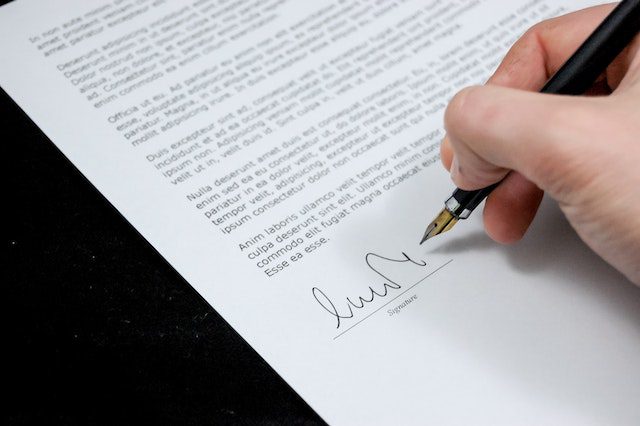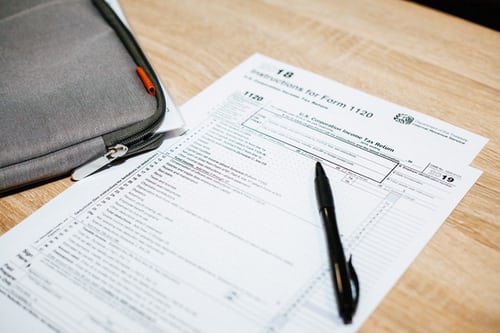
How to Write a Successful Research Proposal: Format and Key Sections
A Research Proposal is a detailed document that describes your proposed research project. It includes clearly stated objectives, a review of supported literature, expected challenges, a study execution plan to achieve milestones, and valid scientific citations.
The purpose of the research proposal is to convince a potential sponsor that the candidate’s proposed research project is valuable and worthy of funding. The proposal must also demonstrate the applicant’s ability to complete the project by presenting a well-structured research plan to achieve the stated objectives.

Image Source: Pexels
Including unnecessary or irrelevant information may confuse and result in the rejection of the proposal. Therefore, the details in a research proposal must be highly relevant to the topic. According to previous research, a research proposal is considered high quality if the author focuses on the subject and selects qualitative quotes to support his claims rather than including partial or completely irrelevant literature as references.
Table of Content
- Format and sections of a research proposal
- Sections of a Research Proposal
- Writing a research proposal to apply for a scholarship
- Elements of a research proposal: proposition outline
- Writing the title of the research proposal:
- Writing the summary of the research proposal:
- Choose keywords for a research paper:
- Write the introduction of the research proposal. Writing the statement of objectives in the research proposal:
- How to do a literature analysis when writing the research proposal?
- How to prepare a study plan in the research proposal?
- Definition and explanation of the research design
- What is the research plan?
- Proposed financing requirements
- How do we propose financing requirements?
- How to include research collaborators in a research proposal?
- Identify funding needs, challenges, and other aspects of research.
- What is the White Paper (General Proposal)?
- What to avoid when writing a Research Proposal?
- How to write the conclusion in a research proposal?
- How to cite reports in a research proposal?
- Bibliography (References) Section of the Research Proposal
Format and sections of a research proposal
To write a well-structured proposal containing all essential sections, title, abstract, introduction, statement of objectives, literature review, research methodology, study planning, budget estimates, details of the research team, and financial source should be included. , recognition of collaborators and references.
Sections of a Research Proposal
A good proposal starts with a short, concise title. The introduction should include a detailed but clearly supported literature review to highlight the proposed study’s issues or challenges, objectives, and significance.
The proposal must also include all essential elements of the project and sufficient information to allow the potential sponsor to evaluate the merits and feasibility of the project accurately. The writer must be aware of dynamic trends that can influence writing by keeping the most up-to-date scientific terms in the proposal. It is also necessary to determine whether the project will be a descriptive or explanatory study and write the proposal accordingly.
Writing a Research Proposal to Apply for a Scholarship
Every research project must address six key themes, regardless of the field of study and the methods used:
- The need to investigate the topic in question
- The relevance of the research findings
- The ways that will be used in the research
- The proposed objectives for the research
- Anticipated challenges in carrying out the study
- Financing needs during the study
It is essential to write the research proposal only after adequate preparation and prior reflection for the following reasons:
- The potential sponsor will most likely reject a poorly prepared and poorly written research proposal.
- A well-prepared proposal will help you visualize the project, plan the research details, implement plans, and supervise fieldwork.
- A proposal that lacks preparation may give the impression of a lack of commitment to the project.
- The research proposal is an integral part of a scholarship application and could be a deciding factor due to the number of people competing for it.
13 Elements of a Research Proposal: Proposal Outline
When writing a research proposal for a specific purpose, such as proposing an academic research project or applying for funding for a project, there are certain factors to consider.
The writer should first focus on the main idea and purpose of the proposal and then construct an outline for writing the different sections of the proposal based on this preliminary information.
Below are the section headings that are typically included in a research proposal. However, depending on the specific project and sponsor requirements, some of the listed sections may be added or removed.
These are the 13 elements of a research proposal:
- Qualification
- Summary
- Keywords
- Introduction
- Mission statement
- Literature analysis
- Research Methodology
- Research plan
- Estimated budget
- Research team details
- Financial source
- Recognitions for collaborators
- References
Writing the Title of the Research Proposal
The research proposal must have a title that clearly and concisely describes the research project that the candidate intends to carry out. The title should clearly explain the proposed study or research project.
According to previous studies, many research proposals are rejected due to the use of long or irrelevant words that derail the scope of the research project or study. Conflicting titles may raise questions that prevent the jury from accepting the proposal.
Sometimes, if the titles are long but meaningful, the reviewers may suggest the candidate revise the topic based on their recommendations. Once the changes are made, the proposal can be accepted instead of rejected. The title of the proposal may be revised once the research has begun to reflect the topic of study better.
You may be interested in: Motivation Letter for Scholarships + Examples
Writing the Summary of the Research Proposal:
The abstract is a summary of the complete research proposal. Typically, it should be around 300 words, although the word limit may be set by the school, company, or institution where the proposal is being submitted.
It has been noted that no citations are used in the abstract, indicating that this is a summary of the research proposal. It should include the main research topic, the reasons for choosing it, any hypotheses adopted, and the research methodology. The summary must be independent of the rest of the proposal and not refer to anything mentioned.
Choose Keywords for a Research Paper
When an institution accepts a research paper, it can become part of its records database. For this reason, some institutions or companies require the use of keywords to classify work and assign it to a specific category/niche, making it easier to store.
Keywords are also important for indexing the work in specific search engines (if it is displayed publicly). Additionally, they help those searching for category-specific records. Therefore, using the keyword section in a research paper is recommended. Typically, adding three to five keywords to your document is enough.
Write the Introduction of the Research Proposal
The introduction of the research proposal gives the reader a better understanding of the context of the proposed main study. The idea is to create a framework for the proposed research topic to help the reader relate it to previous research in the same field.
The introduction should explain why research on the chosen topic is required and how this study can influence it. The introduction of the proposal should be written in a narrative but scientific manner to clearly illustrate the problems that motivated the initiation of the proposed study. Here, care must be taken to use only supporting quotes. If many citations are used that are not closely related to the topic, proposal reviewers may get lost and not find compelling references, which can sometimes lead to rejection of the proposal.
What Are the Elements of an Introduction Section in the Research Proposal?
The introduction in a scientific research proposal should generally include the elements listed below:
- A statement of the broader research problems in clear and precise terms, as well as the purpose of the study.
- A context to clearly point out to the reader the importance and need to investigate the problem.
- An explanation of the reasoning behind the choice of the proposed research topic.
- A compelling discussion of the benefits to be gained from the proposed research.
- An identification of the main variables of the proposed research topic.
- A statement of the hypothesis and research questions.
- A statement about the likely limitations and obstacles to the proposed research.
Writing the Statement of Objectives in the Research Proposal
The objective statement section of the research proposal should clearly and precisely present the proposed project’s goals. These can be general or specific.
Writing the objective statement in a single sentence is suggested to make it clear and convincing to the reader. If the statement is clear, the reader will be motivated to explore the proposal in depth.
Highlight the Novelty of Your Research Proposal
Mentioning the novelty of the proposed research is one of the most common errors reviewers observe. The novelty of the proposed study is essential in your research proposal. You should try to write it with valid citations to support it.
What Are the Guidelines for Writing a Mission Statement?
When writing your mission statement, you should keep the following in mind:
- Write the objectives with precision and clarity.
- Set achievable goals within a specific time frame.
- Avoid long lists of objectives or ones that are too broad.
- The objectives must be quantifiable and realistic.
How to Do a Literature Analysis When Writing the Research Proposal?
The literature analysis section in the research proposal aims to provide sufficient information for the reader to understand the research problem or topic better. The section should indicate research conducted or ongoing on the topic.
This will allow the proposed topic to be placed in the appropriate perspective and verify that it has not been previously investigated or is being investigated by another researcher.
How to Start Writing the Literature Review Report?
The literature review section should be brief and relevant to the proposed topic. It must include citations and references and fulfill the following functions:
- Demonstrate your knowledge of the research problem.
- Show your ability to analyze the literature on the problem critically.
- Demonstrate your knowledge of existing theory and research related to the problem.
- Convince the reader about the relevance and importance of the proposed research’s contribution to the literature on the problem.
How to Prepare a Study Plan in the Research Proposal?
The study plan refers to organizing and programming study times to achieve the established objectives. The research methodology section of the proposal is important as it informs the reader about the approach and methods you will use to approach the proposed study. This section should convincingly demonstrate that a specific process can be adopted to conduct the proposed research reliably.
It should also indicate the activities and work necessary to complete the proposed study. There are several approaches to define the nature of the study, such as descriptive, exploratory, analytical, correlational, causal, inferential, qualitative, and quantitative techniques. The writer should choose the research design and style best suits the proposal and outline the necessary sections in the draft.
Definition and Explanation of the Research Design
Research design is a term used to classify the study conducted by the researcher into a more specific genre based on the techniques, experimental, and study execution plan.
Below are the elements of research methodology that the writer may consider including in the research proposal document:
- Proposed study design: A statement on whether the study design is descriptive, case, or cross-sectional. Provide an explanation about whether the study is based on a questionnaire presented to participants or on experiments conducted in a laboratory.
- An explanation of how the research location was chosen.
- Participants/subjects of the proposed research project: Provide details about the participants of the proposed study, the sampling methods that will be used, and the inclusion/exclusion rules.
- A sample size calculation based on the study being conducted.
- A description of the instruments that will be used in the proposed study, whether they are feasible and reliable, and the reasons for their particular choice. These would include a description of the types of questionnaires that would be used in the study.
- A description of the activities involved in collecting data, how they would be carried out, and how long it would take.
- A description of how the collected data would be analyzed and interpreted. The research proposal should detail data processing and coding plans, computer software to be used, statistical techniques, significance and confidence levels, etc. Dummy tables could also be provided as a tool to explain the process of data interpretation and analysis.
- A discussion of ethical concerns when the proposed research involves invasive procedures on human or animal subjects. In such cases, it would be essential to present the research proposal to the ethics committee at the workplace and at the location where the research project is proposed to be carried out.
What Is the Research Plan?
The research plan section in a research proposal describes the proposed plan or schedule for conducting research on the proposed topic.
The research plan section provides information on how the person carrying out the project will initiate the project, progress from time to time as proposed, and achieve the stated objectives. The plan should provide a tentative time frame for conducting the investigation and a schedule for the various activities that will be part of the proposed process. This would include scheduling time for the following:
- Conduct a literature review to identify the expected duration of the project.
- Make purchases and obtain consumables and amenities necessary for the proposed research.
- Carry out the proposed study and experimentation.
- Examine the data.
- Compare current data with an expected hypothesis and analyze final deviations.
- Write the final report on the proposed research project.
A schedule for the various activities is vital to monitor the project effectively. Each major activity to be carried out during the proposed period should be included in the schedule and assigned a fixed deadline. Research milestones must also be established. The Gantt chart is an effective tool for mapping a schedule of activities. The use of graphs, figures, or images in this section to visually improve the presentation of the proposal increases the reader’s interest, which is why some institutions recommend including graphic information in this section.
Proposed Financing Requirements
Details for calculating research funding requirements in the proposal applicable to all academic disciplines are discussed. The basics of writing a proposal vary between different disciplines. This is because research on epistemological and practical projects is based on different assumptions. However, writing a research proposal is a general introduction to the topic applicable to all disciplines.
Regardless of the nature of the project, funding agencies and their reviewers will expect the proposal to include a research plan, assumptions, inquiries, and results. Viewing the project in these terms could reveal previously ignored aspects. Therefore, the art of writing a good proposal is a useful tool to possess.
Writing a proposal is not a linear process but a circular one that begins and ends with an idea or objective.
How to Propose Financing Requirements?
You may choose to include the budget, funding, or grant requirements section in your documents, such as the research proposal, study plan, or others. A separate section should be established in all these documents to write the cost estimation requirements for carrying out the proposed study or work.
In this section, the candidate should break down each expected cost to provide a clear understanding of their financial requirements. The project cost can be divided into as many subcategories as possible: material cost, labor budget, machinery financing, operating expenses, emergency expenses, etc. The budget expansion depends on the nature of the proposed project. Candidates may also consider adding a subcategory to include revenue/profit generation models that clearly show initial and running costs, break-even points, and profit expectations.
The estimated budget section in the research proposal should detail the budget for the entire proposed project and the expected funding sources. The budget should provide an activity or item categorization of costs and a justification for each.
How to Write Funding Requirements in a Research Proposal?
The budget section of the research proposal clearly indicates the costs involved in implementing the project. It generally consists of tables or spreadsheets with the budget details and a section that provides a justification for the budget, explaining the need for the various expenses mentioned in it. The research proposal must explain the budget, even if it has not been specifically required in the organization/program guidelines.
The budget section of the research proposal should provide a complete budget for the entire project. The budget should not be limited to the size of the grant offered. If the budget exceeds the grant’s size, clarify that you are also seeking other funding sources. Taking such a stance in your research proposal will help you explain things later if you receive grants from more than one source.
The items mentioned in the budget must meet the specific guidelines of the organization to which it is being applied. If any item does not meet established guidelines, be sure to provide an explanation of how you will fund that item in the budget justification section.
Universities often require that costs not directly related to the research project or indirect costs be added to funding sources that are under the administration of the particular university. Each university would have a list of standard rates for such indirect expenses that could be obtained from its administrative office. Create a draft budget for indirect expenses and have it reviewed by the officer in charge at the university before including it in the research proposal.
A major obstacle to presenting a full budget in a research proposal could be embarrassment or discomfort when applying for funding or promoting yourself. However, these feelings may be more related to personal insecurities than the proposal’s quality. Remember that if you don’t apply for funding, you won’t get it, can help overcome these insecurities. Furthermore, the worst result when applying for financing would be a refusal, in which case another source of financing could be sought.
How to Include Research Collaborators in a Research Proposal?
The research team details section provides information about potential research team members and includes the following:
- Identify all the experience required in the proposed project and the team that will work on the proposed research project.
- A calendar of responsibilities for each team member.
- The resumes of all key team members who would work on the proposed project.
- Written consent to participate from all proposed members of the research team.
Identify Funding Needs, Challenges, and Other Aspects of Research.
Recognizing the needs or requirements of the project would be the first step you should take, and the answers to the questions mentioned below could help you get there.
- Is the research a pilot or preliminary project that will lead to developing a more complete research program?
- Is funding required for the following activities: fieldwork, experiments, postdoctoral research, thesis, pre-thesis, or archival research?
- Are you seeking a scholarship to write a book, refine a manuscript, or write a thesis?
- Are you looking for a scholarship allowing you to reside at an institution that provides program assistance and other resources to enhance your research project?
- Is funding required for an extensive research project that lasts several years and requires hiring many employees?
The next step would be to reflect on the project’s focal point. The points listed below could help you narrow down your options.
- Identify the central topic of your research and its relevance.
- List the research problems you are trying to solve and the relevance of those problems.
- Formulate your research hypotheses.
- Select the appropriate research methods for your project.
- Evaluate the importance and potential impact of your research project.
- Decide whether you will use qualitative, quantitative research methods, or a combination of both.
- Consider whether your research will be experimental or clinical.
Once project needs and focus have been determined, project funding organizations and grant programs can be explored.
What is the White Paper (General Proposal)?
The White Paper is a concise and authoritative report on a complex topic that dictates the issuer’s philosophy on that topic. The White Paper helps to understand a complex problem, allowing the person to solve the problem or make a decision based on this document.
Write a White Paper Before Writing the Research Proposal
Since funding is typically sought from various grant programs and project funding organizations, the application process could begin by writing a research proposal and a general research budget. Such a general research proposal is often called a “White Paper.” The White Paper should address a general academic audience by explaining your proposed project. Research proposals to be submitted to various programs and organizations should be modified to reflect each program or organization’s specific rules and guidelines.
What to Avoid When Writing a Research Proposal?
The top priority when writing a scientific research proposal should be to avoid using unnecessary information and claims that cannot be proven with valid citations.
Research proposals often contain avoidable errors that can affect their quality, such as:
- Objectives that do not adequately reflect the title of the research proposal.
- Absence of a bibliographic review or provision of references.
- Goals that are too broad or ambitious.
- Poor scheduling of activities.
- A methodology that has been inadequately described.
- An unreasonably large or small budget that requests too much or too little financial assistance.
How to Write the Conclusion in a Research Proposal?
The conclusion section of the research proposal provides information on the expected results of the study, information on the challenges during the execution of the project, and possible deviations in the results with the scientific and social impact of the proposed study.
The research proposal and its elements, as described above, are intended to act as a guide to help you write a well-structured research proposal to present your project idea in a professional manner. According to previous studies, most research proposals lack the necessary sections, resulting in the rejection of a proposal. In this study, we have provided all the essential components a person must describe to write a well-structured research proposal.
How to Cite Reports in a Research Proposal?
When the research proposal cites multiple works within its description, a list of references should be provided at the end of the proposal. This proposal section is generally not counted against the page limits set in the guidelines.
Bibliography (References) Section of the Research Proposal
A reference list is prepared by listing the books, journals, articles, or other documents you have cited in the research proposal. This list is usually organized alphabetically by the author’s last name. However, there are different styles for formatting references, and you should check the guidelines to see if any styles have been specified. You could also consult your mentor about the same or check the reference section of the research articles assigned to you in your reading list. The use of endnote or Mendeley is highly recommended when writing the research proposal.

















